Genre: Compilation Developer: Sega Enterprises Publisher: Sega Enterprises Players: 1-2 Released: 1992
What to say about this one? It is another specimen, of one of those rare titles you don’t encounter anymore with most consoles these days, a pack in title. This was released with European Mega Drives, mostly model ones in 1992. Some Mega Drive bundles had this as a pack in, as well as Sonic The Hedgehog, and were known as “Mega Pack.” If Mega Games 2 was the highlight, with such luminaries as Streets of Rage, Golden Axe, and Revenge of Shinobi, then Mega Games 1 is the nadir.
Perhaps that is a tad unfair, though. The games are certainly not all that bad, but they are also not great. They are mediocre at best, but the most perplexing about them is the diversity. You get one racing game, one puzzle game, and one sports game. Who made that choice ? Perhaps it was to counter Nintendo’s 1990 NES pack in offering. which was a three-in-one cartridge with Super Mario Bros., Tetris, and Nintendo World Cup. Who knows the real reason why Sega chose these three titles, but the comparison with the NES cartridge seems most likely.
So let’s meet the games in question. First up is Super Hang-On, the sequel to Hang-On. The Mega Drive version is a conversion (and adaptation) of the arcade game, and it’s also a near-launch title in the U.S., released a few weeks after the launch of the Genesis in 1989. That means that the graphics are not up to much. They are quite scaled back with empty vistas as far as the eye reaches and feature some choppy scaling.
The most important part of any game is the gameplay, and one has to ask if Super Hang-On gets it right. Well yes… and no. The controls are fairly simple and easy to get to grips with. A brakes, B accelerates, and the D-pad moves your bike. But the arcade mode is absolutely atrocious, with an unforgiving timer (they really should remove that timer from home conversions) and bland gameplay. The graphics here are equally bland, and are nothing more than the same empty sky and color swap over and over as you progress. For most people, this mode will become boring after half an hour of play and will never be played again. To be fair, the arcade version does give you a choice of difficulty and continents to race, but all that this means in reality is slightly longer races against a slightly different background.
The real game can be found in original mode, where you compete against other drivers in tournaments while gaining cash and recognition for sponsors. There is no timer, thankfully, but you can crash and break your bike and forfeit the race. Do either of these too often and your sponsor will demote you or pull back all together. However, as you progress in tournaments, you will earn more money which will allow you to buy better bikes, upgrade your bikes or hire better mechanics to keep your bike in better shape. The gameplay is still largely the same, but original mode injects just enough strategy and forward planning to keep things interesting. There is no battery back-up, to save your progress you have to use a ridiculously long 28-character password.
Super Hang-On is a poor conversion, scaled down and chopped up from an arcade original, but all in all passable. It’s certainly better then the next game in the collection. World Cup Italia ’90 is a veritable chameleon of a game and has popped up almost everywhere in different guises and under different names. In Japan it was known as World Cup Soccer and as World Championship Soccer in the U.S., though some earlier cartridges had only the simplified developer title Soccer on the title screen. Is this a rare variant that goes for big bucks on eBay? I doubt it. While in Europe, it briefly held the 1990 FIFA world cup license. After the license expired, the game was re-titled Sega Soccer.
The name shenanigans are sadly the best thing one can say about World Cup Italia ’90. Football games tend to be hit and miss, even more so on 16-bit systems. This one misses the goal all together. The graphics are uninspired, turgid and top down, and every player looks the same. The playing field is rather small, and you have no complete overview of the playing field. Half the time you don’t even know where you are or where your players are, and the tiny map only helps so much. Usually, you wander around lost during a match. The nicest thing one can say about the graphics is that the ball looks nice, is animated well, and looks good when shot in the air. The corner shots, goal shots and penalty animations look nice as well.
The matches take an excruciating 15 minutes to complete, if you can complete one at all! An entire World Cup tournament would take up to two hours if you were lucky enough to get there because the controls are mushy and unresponsive. The control layout is totally counter initiative, and the CPU is hard as nails and will do everything to break you down and get in your way. The options are minimal, and the best thing to say about this title is that its such an ubiquitous chameleon, appearing in all regions, under different names. Whether or not it being everywhere is a good thing is up to you to decide. World Cup Italia ’90 is the weakest title in the Mega Games line up and best avoided altogether by football fans, casuals, and football haters alike.
Finally, we come to Columns, which is the resident Tetris clone from Sega, as well as the best game in the collection. There isn’t much to say about it. It’s a puzzle game, and like most good puzzle games, it’s easy to pick up and play, hard to master, and absolutely addicting. The goal of the game is to line up three or preferably more gemstones of the same kind. If you do, watch them all disappear in a glorious multi-colored explosion. The graphics are simple but colorful and do the job, though for some reason Sega chose to go with a ancient Greek motif for the game. This is somewhat unexpected, though it was probably done because Tetris, which was taking the world by storm by then, had a Russian theme going for it.
Whatever the case, it sets the game apart from other puzzle titles. It has a range of modes, from the arcade original to several two-player modes and even a time trial mode, where you have to clear the screen in three minutes. The only thing that’s actually bad, other than the fact that it doesn’t save your scores (Tetris doesn’t either), is the horrible music. It’s almost ominously doom-laden. Thankfully, there is one track that’s somewhat decent, but the whole soundtrack is rather ominous. There are also two sequels, but neither comes close to the first Columns. Columns II was never released on the Mega Drive or Genesis. Columns III was released on the Mega Drive in 1993 in Japan and the U.S. The whole series was re-released in 1997 on the Saturn as Columns Arcade Collection, in Japan only.
So what is the final verdict? Mega Games 1 is mediocre at best, especially compared to what followed it. World Cup Italia ’90 was rubbish in 1990, and it’s rubbish now. Super Hang-On is a pared down, poor conversion of an arcade game and has aged badly. The sole stellar game, and the only reason to look for or fire up Mega Games 1, is Columns, and it’s the only reason to give this collection a passing grade. Columns on its own is an 8/10 title, but the other two games it shares this collection with drag it down. Super Hang-On is a 5, and World Cup Italia ’90 is a 2, and that is me being charitable.
SCORE: 5 out of 10

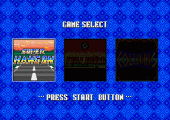
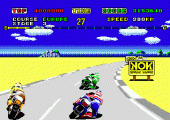
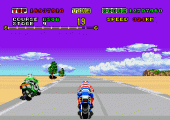
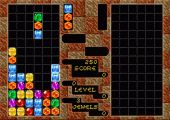
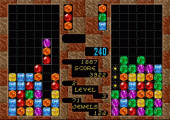
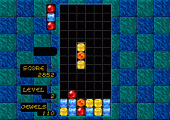
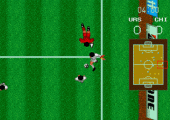
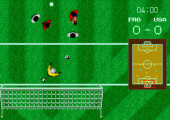
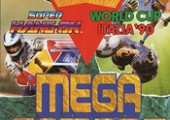
Recent Comments